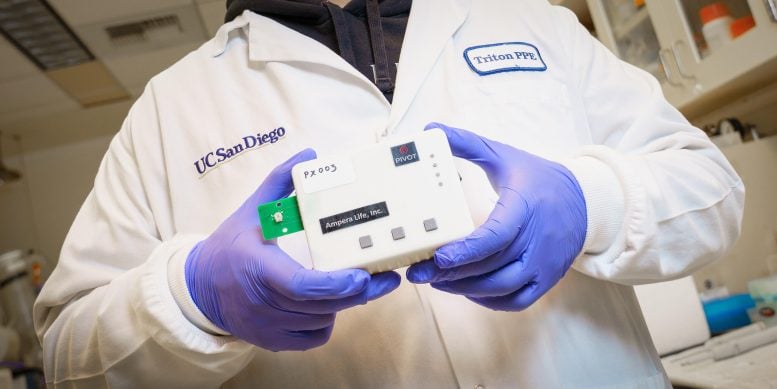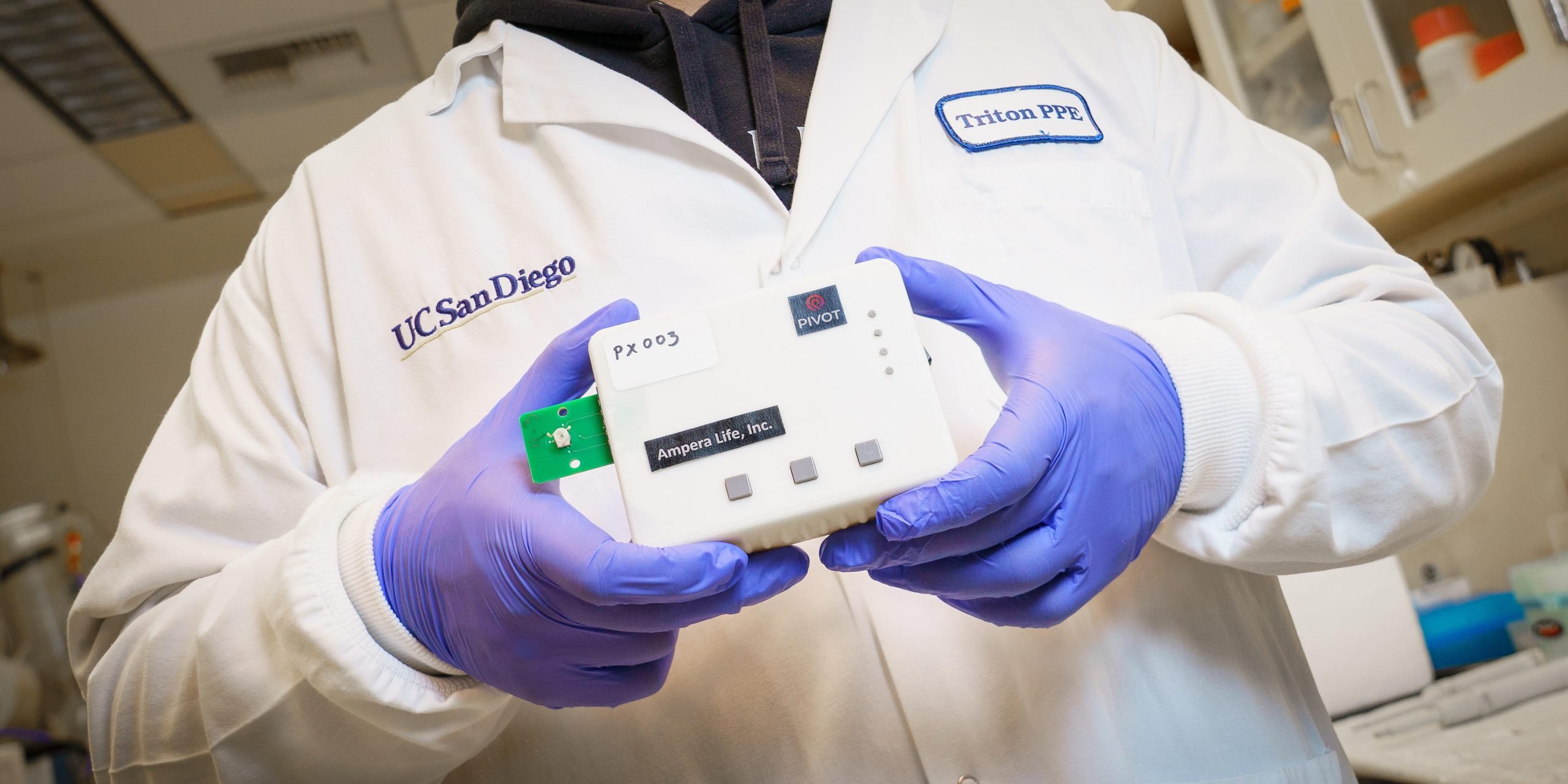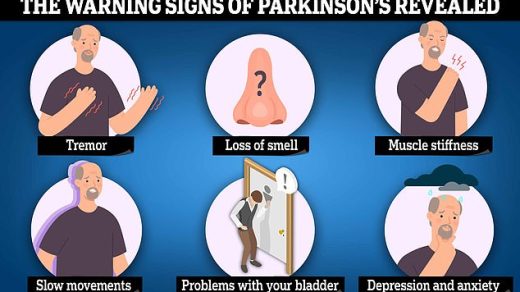A New Wireless, Handheld, Non-Invasive Device Successfully Detects Alzheimer’s and Parkinson’s Biomarkers
December 31, 2023

The biosensor and reader are designed to be used at home or at a point of care. The system can transmit results wirelessly to physicians, patients, and patient’s caregivers and family. Credit: David Baillot/University of California San Diego
The next steps involve testing saliva and urine samples with the biosensor.
An international team of scientists has created a handheld, non-invasive device that can detect biomarkers for
The device relies on electrical rather than chemical detection, which researchers say is easier to implement and more accurate.

The biosensor consists of a chip with a highly sensitive transistor, made of a graphene layer that is a single atom thick and three electrodes–source and drain electrodes, connected to the positive and negative poles of a battery, to flow electric current, and a gate electrode to control the amount of current flow. Credit: David Baillot/University of California San Diego
“This portable diagnostic system would allow testing at-home and at point of care, like clinics and nursing homes, for neurodegenerative diseases globally,” said Ratnesh Lal, a bioengineering, mechanical engineering, and materials science professor at the UC San Diego Jacobs School of Engineering and one of the paper’s corresponding authors.
The Urgent Need for Early Detection
By the year 2060, about 14 million Americans will suffer from Alzheimer’s Disease. Other neurodegenerative diseases, such as Parkinson’s, are also on the rise. Current state-of-the-art testing methods for Alzheimer’s and Parkinson’s require a spinal tap and imaging tests, including an MRI. As a result, early detection of the disease is difficult, as patients balk at the invasive procedures. Testing is also difficult for patients who are already exhibiting symptoms and have difficulty moving as well as those who have no early access to local hospitals or medical facilities.
One of the prevailing hypotheses in the field, which Lal has focused on, is that Alzheimer’s Disease is caused by soluble amyloid peptides that come together in larger molecules, which in turn form ion channels in the brain.

A close up of the silicon well in the biosensor with the graphene-based transistor at the bottom. Credit: David Baillot/University of California San Diego
Lal wanted to develop a test that would be able to detect amyloid beta and tau peptides – biomarkers for Alzheimer’s – and alpha-synuclein proteins – biomarkers for Parkinson’s – non invasively, specifically from saliva and urine. He wanted to rely on electrical rather than chemical detection, as he believes it is easier to implement and more accurate. He also wanted to build a device that could wirelessly transmit the test results to the patient’s family and physicians. The device is the result of his three decades of expertise, as well as his collaboration with researchers globally, including those co-authors in this work from Texas and China.
“I am trying to improve quality of life and save lives,” he said.
To realize Lal’s vision, he and colleagues adapted a device they developed during the COVID pandemic to detect the spike and nucleoprotein proteins in the live they described in PNAS in 2022. That breakthrough had been made possible by chip miniaturization and by large-scale automation of biosensor manufacturing.
How the device is made and how it works
The device described in the 2023 PNAS study, consists of a chip with a high-sensitivity transistor, commonly known as a field effect transistor (FET). In this case, each transistor is made of a DOI: 10.1073/pnas.2311565120
Funding for the research came from the Adblock test (Why?)
Article






